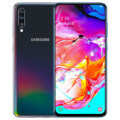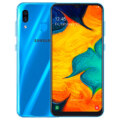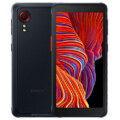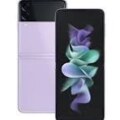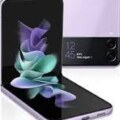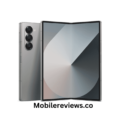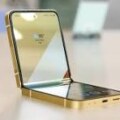- Home
- Mobiles
- Smartphones
- Best Samsung Galaxy Z Fold5
Best Samsung Galaxy Z Fold5
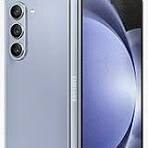



Samsung Galaxy Z Fold5
- Samsung Galaxy Z Fold5: Detailed Description
DESCRIPTION OF SAMSUNG Z FOLD5
The Samsung Galaxy Z Fold5 is a flagship foldable smartphone, building on the success of its predecessors with improved features and design refinements. It continues to push the envelope in foldable technology, offering a combination of cutting-edge hardware and innovative software.
Design and Build
- Form Factor: The Z Fold5 features a book-like foldable design with a large internal display that folds out, and a more compact external display that functions when the device is closed.
- Materials: Constructed with premium materials, including Gorilla Glass Victus+ on the cover display and back panel, and an aluminum frame for added durability. The foldable screen is protected by an armor aluminum and Gorilla Glass Victus+ layer.
- Dimensions:
- Closed: Approximately 154.9 x 67.1 x 14.2 mm
- Open: Approximately 154.9 x 129.9 x 6.2 mm
- Weight: Around 263 grams, making it slightly heavier due to the foldable design.
Display
- Cover Display:
- Size: 6.2 inches
- Type: Dynamic AMOLED 2X
- Resolution: 2316 x 904 pixels
- Refresh Rate: 120Hz
- Main Display:
- Size: 7.6 inches
- Type: Dynamic AMOLED 2X
- Resolution: 2176 x 1812 pixels
- Refresh Rate: 120Hz
- Features: HDR10+ support, improved crease visibility reduction.
Performance
- Processor: Qualcomm Snapdragon 8 Gen 2
- RAM: 12GB
- Storage Options: 256GB, 512GB, and 1TB (non-expandable)
Camera System
- Rear Cameras:
- Main: 50 MP, f/1.8
- Ultra-Wide: 12 MP, f/2.2
- Telephoto: 10 MP, f/2.4
- Front Cameras:
- Cover Camera: 10 MP, f/2.2
- Under-Display Camera: 10 MP, f/2.2
- Features: Improved low-light performance, enhanced video stabilization.
Battery and Charging
- Battery Capacity: 4,400 mAh (dual-cell)
- Charging:
- Wired: 25W fast charging
- Wireless: 15W wireless charging
- Reverse Wireless Charging: 4.5W
Software
- Operating System: Android 14 with Samsung’s One UI 6
- Features: Optimized for multitasking and large-screen experiences, including improved Flex Mode for hands-free video calls and multitasking enhancements.
Connectivity and Other Features
- 5G: Yes
- Wi-Fi: Wi-Fi 6E
- Bluetooth: Bluetooth 5.3
- NFC: Yes
- Water and Dust Resistance: IPX8
- Security: In-display fingerprint scanner and facial recognition
Pros and Cons Table
| Pros | Cons |
|---|---|
| Innovative Foldable Design | High Price |
| Large 7.6-inch main display for immersive experiences | Heavier than non-foldable phones |
| Excellent build quality with durable materials | Battery life could be better |
| High-performance Snapdragon 8 Gen 2 processor | Software bugs or glitches in initial releases |
| Versatile camera system with multiple lenses | Limited third-party app support for foldable |
| High refresh rate displays for smooth operation | Thicker and bulkier compared to traditional phones |
| 5G connectivity and modern features | Potential crease visibility on main display |
| Robust water and dust resistance (IPX8) | Limited expandable storage |
| Fast charging and wireless charging capabilities | Limited availability in some regions |
The Samsung Galaxy Z Fold5 represents a significant step forward in the foldable smartphone category, combining powerful hardware, cutting-edge display technology, and versatile features with some trade-offs, mainly in price and form factor.


Specs
General
| Device Type | Mobile |
| Model | Samsung |
| Announced | 10 July, 2023 |
| Released | 24 July, 2024 |
| Status | Available |
| Price | 2159 |
Design
| Type Design Type called form factor refers to a mobile phone's size, shape, and style as well as the layout and position of major components of phone. There are three major form factors seen in mobile phones => bar phones, folding phones and sliding phones. | Folding |
| Dimensions | Unfolded: 153.5 x 132.6 x 5.6 mm Folded: 153.5 x 68.1 x 12.1 mm |
| Weight | 239 g (8.43 oz) |
| Colors |
Navy, Silver Shadow, Pink, Black, White |
Network
| 2G Network |
Technology GSM / CDMA / HSPA / EVDO / LTE / 5G |
| 3G Network |
HSDPA 850 / 900 / 1700(AWS) / 1900 / 2100 HSDPA 850 / 900 / 1900 / 2100 CDMA2000 1xEV-DO |
| 4G Network |
1, 2, 3, 4, 5, 7, 8, 12, 13, 14, 18, 19, 20, 25, 26, 28, 30, 38, 39, 40, 41, 46, 48, 66, 71 |
| 5G Network |
GSM / CDMA / HSPA / EVDO / LTE / 5G 2, 5, 25, 41, 66, 71, 260, 261 SA/NSA/Sub6/mmWave |
| SIM SIM (Subscriber Identity Module) is a small card that contains mobile network subscriber's account information. This allows the phone using the card to attach to a mobile network. The SIM card is most commonly associated with GSM and UMTS mobile networks. Moving a SIM card from one phone to another allows a subscriber to switch mobile phones without having to contact their mobile network carrier. SIM cards can also be used by a phone to store limited amounts of data, such as phone numbers and text messages. | Nano SIM |
| Dual SIM | Yes |
Display
| Display Type Display Technology => A number of display technologies and types used in mobile phones => TFT (Thin Film Transistor), IPS (In-Place Switching), OLED (Organic Light Emitting Diode), AMOLED (Active-Matrix Organic Light-Emitting Diode), Super AMOLED (an even advanced version of AMOLED), Resistive Touchscreen (Resistive touchscreens contain two layer of conductive material with a very small gap between them which acts as a resistance), Capacitive Touchsceen (Capacitive touchscreen technology consists of a layer of glass coated with a transparent conductor) | Foldable Dynamic LTPO AMOLED 2X, 120Hz, HDR10+, 2600 nits (peak) |
| Size | 7.6 inches, 185.2 cm2 (~91.0% screen-to-body ratio) |
| Resolution | 1856 x 2160 pixels (~374 ppi density) |
| Pixel Density Pixel Density (PPI) is refers to the concentration of pixels on a particular display, measured in pixels per inch (ppi). Pixel density is calculated by dividing the diagonal pixel resolution of a display by its diagonal size, higher pixel density better display quality. | 968 x 2376 pixels, 410 ppi |
| Touch Screen | MULTI TOUCH |
| Features |
Fingerprint (side-mounted), accelerometer, gyro, proximity, compass, barometer Samsung DeX (desktop experience support) Ultra Wideband (UWB) support |
Media
| Audio Playback | 32-bit/384kHz audio |
| Video Playback | Yes |
| Video Out | Yes |
| FM Radio | Yes |
| Alert Types | Vibration, MP3, WAV ringtones |
| Ring Tones | Tuned by AKG |
| Loudspeaker | Yes |
| Handsfree | Vibration, MP3, WAV ringtones |
Camera
| Primary Camera is able to capture photographs and usually videos, The most important characteristics of a camera are the resolution (measured in megapixels), lens focus type (fixed or automatic), higher megapixel cameras are known to capture higher quality photos, but not always a good measurement of the photos quality. | Triple rear camera with 50MP, Dual selfie camera. |
| Image | 50 MP, f/1.8, 23mm (wide), 1.0µm, dual pixel PDAF, OIS 10 MP, f/2.4, 66mm (telephoto), 1.0µm, PDAF, OIS, 3x optical zoom 12 MP, f/2.2, 123˚, 12mm (ultrawide), 1.12µm |
| Video | 8K@30fps, 4K@60fps, 1080p@60/240fps (gyro-EIS), 720p@960fps (gyro-EIS), HDR10 |
| Camera Features |
LED flash, HDR, panorama |
| Flash Flash Light => There is commonly two types of flash lights are used in camera mobile phones, LED Flash (LED flash offers lower power consumption with drive circuitry that takes up very little room, LEDs can be strobed faster than any other light source), Xenon Flash (xenon flash produces an extremely intense full-spectrum white light for a very short duration) | LED flash, panorama, HDR, 3D LUT import |
| Secondary | 4 MP, f/1.8, 26mm (wide), 2.0µm, under display |
Software
| Operating System OS => Every computer system run on a base software called Operating System (OS). Operating System controls all basic operations of the computer (such as smartphone, PDAs, tablet computers and other handheld devices). The Operating System allows the user to install and run third party applications (apps), apps are used to add new functionality to the device. | Android 14, One UI 6.1.1 |
| Facebook Facebook is a popular free social networking website that allows registered users to create profiles, upload photos and video, send messages and keep in touch with friends, family and colleagues. The site is available in 37 different languages. | |
| Youtube Youtube is a popular free video-sharing website, Youtube is the largest video sharing site in the world, Millions of users around the world have created accounts on the site that allow them to upload videos that anyone can watch. |
Hardware
| Chipset Chipset is a group of integrated circuits designed to perform one or a more dedicated functions, often with real time computing constraints, Popular smartphones are equipped with more advanced embedded chipsets that can do many different tasks depending on their programming. | Qualcomm SM8550-AC Snapdragon 8 Gen 3 (4 nm) |
| CPU CPU (Central Processing Unit) mostly known as processors, CPU processes instructions in order to carry out certain functions that make your device operate properly. Processors are often described as the brain of computers, smartphones and tablets, Smartphones and tablets rely on processors to carry out their every task, Processors are an incredibly important factor in selecting any type of computing device, including your smartphone. | 8-core (1x3.39GHz Cortex-X4 & 3x3.1GHz Cortex-A720 & 2x2.9GHz Cortex-A720 & 2x2.2GHz Cortex-A520) |
| GPU GPU (Graphics Processing Unit) is a single-chip processor designed to rapidly manipulate and alter memory to accelerate the creation of images in a frame buffer intended for output to a display, This includes things such as lighting effects, object transformations, and 3D motion. | Adreno 750 (1 GHz) |
| RAM (Memory) RAM (Random Access Memory) is a type of computer memory that can be accessed randomly, any byte of memory can be accessed without touching the preceding bytes that allows information to be stored and accessed quickly from random locations. RAM is the most common type of memory found in computer systems, smartphones, tablets and other electronic devices. | 12 GB |
| Internal Storage Internal Storage is a data storage space (flash memory) mostly used in smartphones, tablets and other electronic devices where operating system, apps, music, photos, videos, files and other user data Is stored. | 256/512 GB / 1TB |
| Card Slot Memory Card Slot is a special slot for inserting a memory card. Memory cards allow you to expand the phone's built-in memory, A memory card (sometimes called a flash memory card or a storage card) is a small storage medium used to store data such as text, pictures, audio, and video, for use on small, portable or remote computing devices such as mobile phones, mp3 players, digital cameras. | dual nano-SIM card |
| Sensors Sensors are electronic components that detects and responds to some type of input from the physical environment. The specific input could be light, heat, motion, moisture, pressure and location, The output is generally a signal that is converted to use in computing systems, a location sensor, such as a GPS receiver is able to detect current location of your electronic device. |
Fingerprint (side-mounted), accelerometer, gyro, proximity, compass, barometer Samsung DeX (desktop experience support) Ultra Wideband (UWB) support |
Connectivity
| Bluetooth Bluetooth is a wireless communications technology for exchanging data between mobile phones, headsets, computers and other network devices over short distances without wires, Bluetooth technology was primarily designed to support simple wireless networking of personal consumer devices. | 5.3, A2DP, LE, aptX HD |
| Infrared Infrared connectivity is an old wireless technology used to connect two electronic devices. It uses a beam of infrared light to transmit information and so requires direct line of sight and operates only at close range. | |
| Wi-fi Wi-Fi is a popular wireless networking technology using radio waves to provide high-speed network connections that allows devices to communicate without cords or cables, Wi-Fi is increasingly becoming the preferred mode of internet connectivity all over the world. | Wi-Fi 802.11 a/b/g/n/ac/6e/7, tri-band, Wi-Fi Direct |
| Wi-fi Hotspot | |
| USB | USB Type-C 3.2, OTG |
| GPS GPS The Global Positioning System is a satellite-based radio navigation system, GPS permits users to determine their position, velocity and the time 24 hours a day, in all weather, anywhere in the world, In order to locate your position, your device or GPS receiver must have a clear view of the sky. | GPS, GALILEO, GLONASS, BDS, QZSS |
| NFC NFC (Near field communication) is a set of standards for smartphones and similar devices to establish peer-to-peer radio communications with each other by touching them together or bringing them into proximity, usually no more than a few inches. | |
| HDMI HDMI (High-Definition Multimedia Interface) is a compact audio/video interface for transferring uncompressed video data and compressed or uncompressed digital audio data from a HDMI-compliant source device to a compatible computer monitor, video projector, digital television, or digital audio device. | |
| Wireless Charging Wireless Charging (Inductive Charging) uses an electromagnetic field to transfer energy between two objects. This is usually done with a charging station. Energy is sent through an inductive coupling to an electrical device, which can then use that energy to charge batteries or run the device. | yes |
Data
| GPRS GPRS (General Packet Radio Service) is a packet oriented mobile data service on the 2G and 3G cellular communication system's global system for mobile communications (GSM), Generally, GPRS is used for the purpose of wireless data transfer, such as sharing pictures and videos or browsing the Internet via a mobile phone connection. | |
| EDGE EDGE (Enhanced Data GSM Environment) is a wireless network technology generally considered the next step in the 2G network offers data transfer rates up to four times faster than ordinary GSM networks, Generally, EDGE is used for the purpose of wireless data transfer, such as sharing pictures and videos or browsing the Internet via a mobile phone connection. | |
| Speed | HSPA 42.2/5.76 Mbps, LTE-A (7CA) Cat20 2000/200 Mbps, 5G |
| Web Browser Web Browser => a web browser is a software application used to locate, retrieve and display content on the World Wide Web, including Web pages, images, video and other files, The primary function of a web browser is to render HTML, the code used to design or markup webpages. | Yes |
Messaging
| SMS SMS (Short Messaging Service) is a text messaging service component of phone, Web, or mobile communication systems. It uses standardized communications protocols to allow mobile phone devices to exchange short text messages over the networks. | Yes (threaded view) |
| MMS MMS (Multimedia Messaging Service) is a standard way to send messages that include multimedia content (audio clips, video clips and images) to and from mobile phones over wireless networks using the WAP protocol. | |
| Email Email (Electronic Mail) is a system for receiving, sending, and storing electronic messages, Similar to a letter, email is text messages that may contain files, images, or other attachments sent via the internet to a recipient by using applications and software prograps. An email address is required to receive email, and that address is unique to the user. | Yes |
| IM IM (Instant Messaging) is an exchange of text messages through a software application, it enable you to create a kind of private chat room with another individual in order to communicate in real time over the Internet. | Yes |
Battery
| Battery Type Battery Type => Cell phones run on various kinds of batteries depending on the manufacturer, phone size or shape and features. There are basically four types of cell phone batteries => Lithium Polymer, Lithium Ion, Nickel Metal Hydride and Nickel Cadmium. | Non-removable Li-Po |
| Capacity Battery Capacity is a measure (typically in Amp-hr) of the charge stored by the battery, and is determined by the mass of active material contained in the battery. The battery capacity represents the maximum amount of energy that can be extracted from the battery under certain conditions. | 4400 mAh |
| Placement | Non-removable |
Reviews
Offers
Disclaimer Note
We do not guarantee that the information of this page is 100% accurate and up to date.

